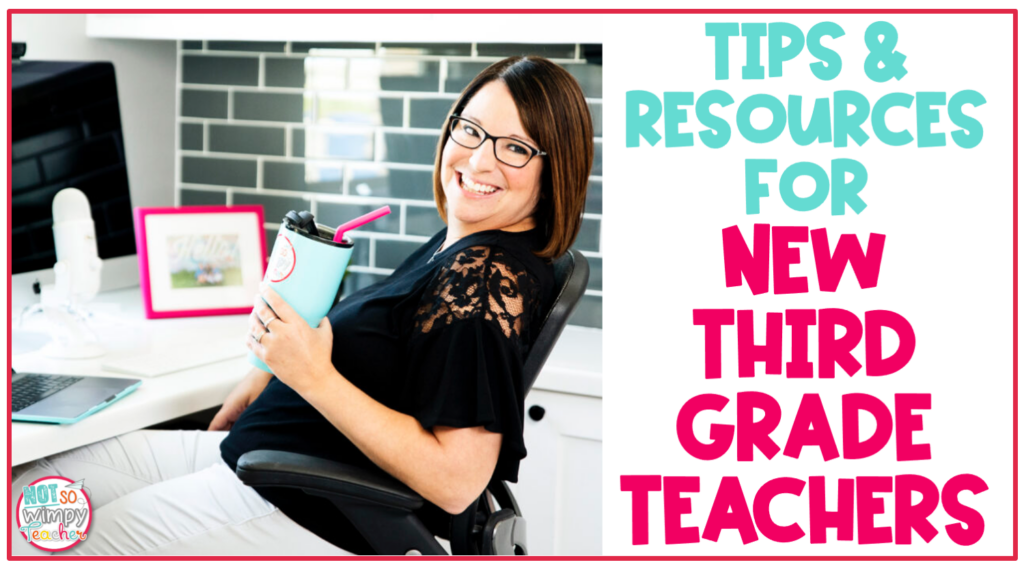
If you ask me (and I am pretending that you did), third grade is the BEST grade to teach!
Third graders are still young enough to love school, love their teacher and get excited over simple things like coloring. However, they are old enough to be independent workers and thinkers. Most third graders know how to read and are now learning to love to read. Third graders are eager to learn multiplication and cursive handwriting. It is a year of huge growth, both academically and socially. Seriously, it is the BEST!
Did you know that I have a Facebook group that is dedicated to all things third grade? Well now you do! It is a great place for third grade teachers to ask for advice! Click HERE to join!
Tips for Teaching Third Grade:
I recently asked the group what tips they would give a brand new third grade teacher. And I mixed some of their tips with some of my own! I hope this helps!
- Stop stressing about the testing! I mean it! If you stress about the test, so will your students. What good comes of that? The best testing tip that I can give you is to teach the standards all year while differentiating for your learners. You were going to do that anyway! Every kid won’t get a proficient on the test. That’s ok. They will do their best because you gave them the tools to do so. A wise third grade teacher said, “The test is important, but their futures are more important.” So repeat after me, “The test does not define me or my students.” I’ll wait…
- Read to them! #everyday. Read chapter books Read picture books. Introduce them to lots of authors series and genres. One of the greatest joys of third grade is helping students to find their love for reading. I blogged about my very favorite third grade books. Click HERE to see the list.
- Third grade mathematicians still need manipulatives and pictures. Don’t be scared to spend lots of time with base 10 blocks, fraction bars, number lines, etc. Algorithms should not be the focus until students have a very strong grasp on the strategies and meanings behind the skills.
- Reward positive behavior and academic growth. They are still kids and they like stickers, positive notes, compliments, and reward tags. Are you ever too old to like being told that you are rocking it?!
- Plan to spend LOTS of time teaching and practicing rules and procedures at the beginning of the year. If you do, third graders can be very independent! Centers work well in third grade because they have more stamina, focus, and independence than the younger grades. Just don’t rush into curriculum without teaching the expectations thoroughly! Click HERE to read about some fun ways to practice routines and grab some freebies!
Teaching ELA
Vocabulary
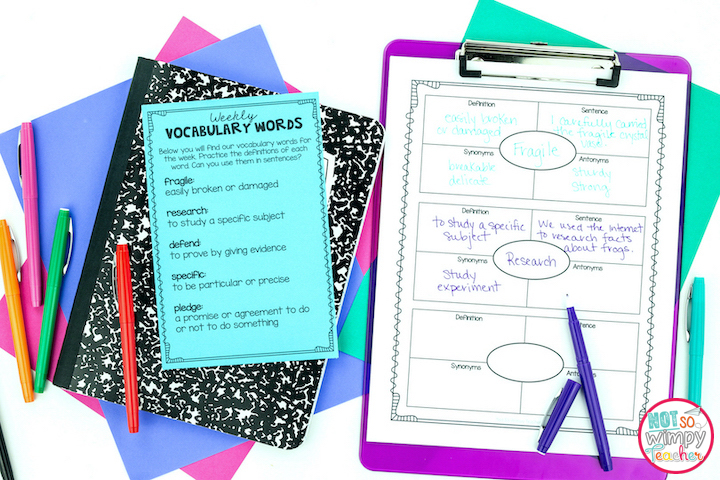
Teaching vocabulary is a must in third grade. Explicit vocabulary instruction will help your students in reading comprehension, writing and on standardized testing.
I always focused on tier 2 words. These high-frequency words appear often in grade level texts and tests. And knowing these words is key to increasing reading comprehension and improving tests scores.
Read more about the routine I used to teach tier two vocabulary with only ten minutes per day.
And don’t forget to make it fun. Third graders love to play games. Check out these 10 FREE games you can play with any vocabulary words.
Shop This Post
Grammar
You know you have to teach grammar in third grade. And you know your students aren’t going to love it. But grammar doesn’t have to be boring.
The key is to keep your lessons short. All you need is 10 minutes a day. And establish a routine. Kids love knowing what’s coming next. Finally, try these four strategies to make teaching grammar more fun.
Shop This Post
Writing
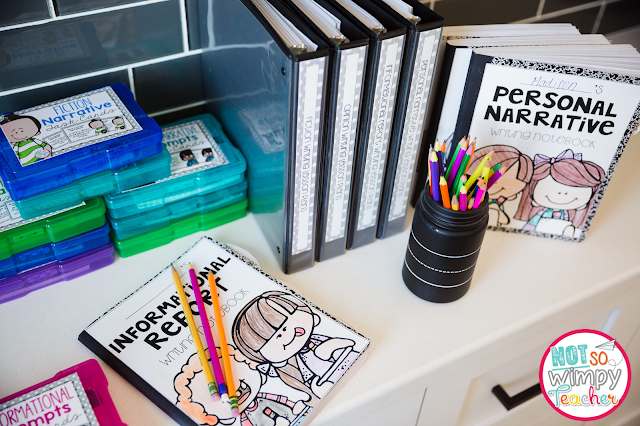
Third graders need regular writing instruction. They need mini lessons that focus on the craft of writing. Simply asking them to write in a journal is not enough.
You should make time to teach writing every day. A short mini lesson focused on one specific skill, independent writing time to practice that skill, small group instruction to help students master new skills, and share time are all you need. Check out this post for more information on how I ran my writing workshop.
And if you’d love some done-for-you writing lessons, you need to check out my writing bundle. This resource comes with 32-weeks of writing lessons in four different genres: personal narrative, informational report, opinion, and fiction. There are mentor texts, anchor charts, mini lessons, daily writing tasks, rubrics and more. It lays out exactly what to teach in writing all year long.
Another important writing skill, and one that students will need for standardized tests, is responding to text.
I love that third graders are able to really dig deep into text! I spend quite a bit of time teaching students to respond to text because I think it leads to huge growth in comprehension. Check out these tips for teaching your third graders how to write about text.
FREE Writing Prompts
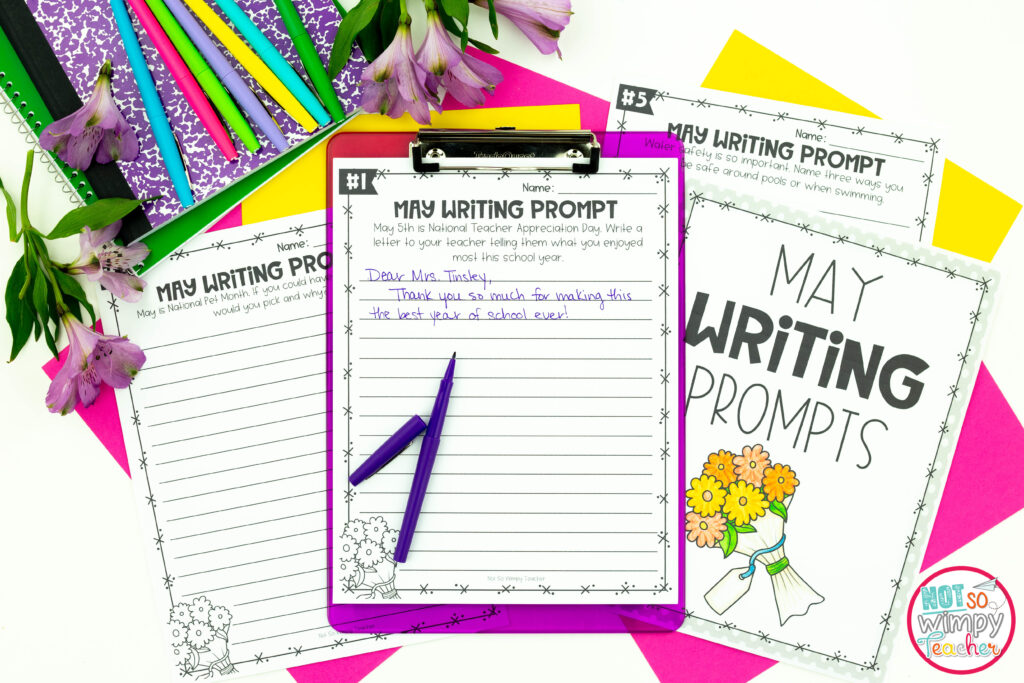
My FREE writing prompts are a great resources to have for morning work, fast finishers, and sub plans. There are 5 prompts for every month of the year. Some are seasonally based, some are evergreen, and all of them are fun and engaging for kids.
Download your 60 FREE Writing Prompts Today!
Not So Wimpy Writing Masterclass
Want even more tips on how to teach writing? Then you will love my online professional development course the Not So Wimpy Writing Masterclass. I specifically developed this online professional development course for teachers in grades 2-5 to help simplify writing workshop and provide the tools and strategies you need to be a more confident writing teacher.
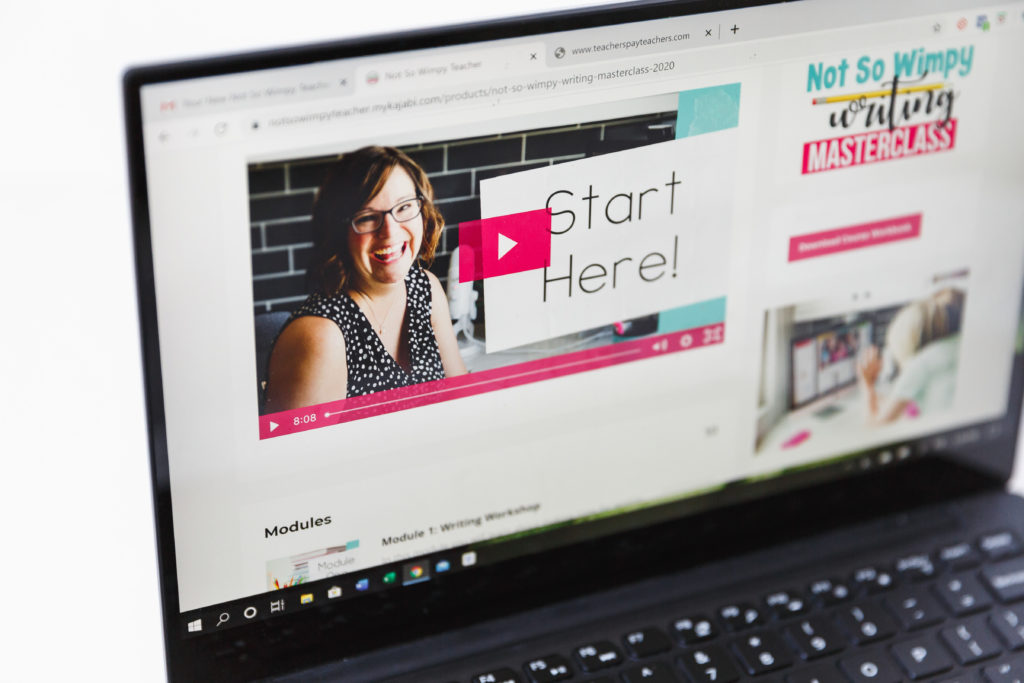
You’ll learn tried and true strategies for how to teach writing, including how to:
- Teach writing in units
- Create manageable mini lessons
- Keep students on task during independent writing time
- Implement a successful writing workshop without chaos and confusion
- Transform ALL your students into eager and excited writers who have the skills needed to perform well on standardized tests
In short, this course is designed to help you become a more confident writing teacher, regardless of what writing curriculum you have (or don’t have).
Reading
There are so many tricky reading standards to teach in third grade. Compare and contrast, author’s purpose, central message, main idea. It’s important to engage kids in reading if we expect them to master these challenging ideas. I suggest using mini lessons and hands-on centers to make learning fun. Check out these five fun ideas to excite your readers.
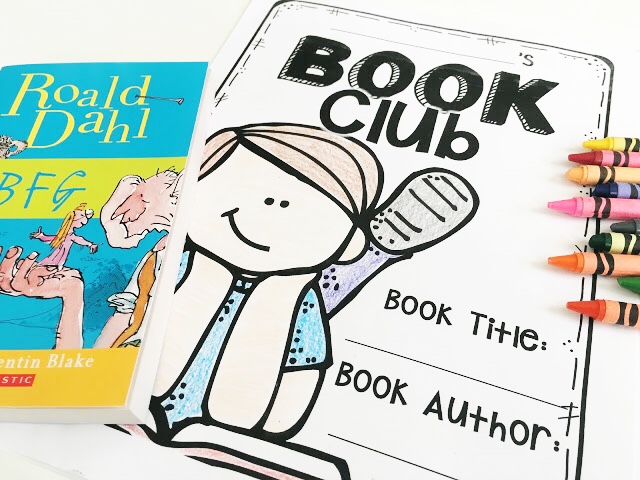
I have found that book clubs are one of the easiest ways to teach and practice reading standards while helping to grow your students’ love for reading. Kids find trade books much more interesting than basal readers. And book clubs make it easy to differentiate learning. You can teach one skill to the whole class, but use different leveled books to meet individual student needs. Learn more about how I implemented book clubs in the classroom.
Another important reading skill to develop in third grade is close reading. Close reading uses repeated readings and discussion of a text to deepen student comprehension. It encourages kids to use reading strategies, comprehension questions, and evidence-based analysis of a text to increase understanding. And it is a key component of reading comprehension. This post breaks down a close reading routine that is implement in your classroom.
Teaching Math in Third Grade
If you make math fun, your third graders will beg for more math! I am not kidding! And I’ve got lots of ideas to make teaching and learning math fun!
Math Workshop

The best thing I ever did for my students was to implement guided math and centers. You might call this math workshop.
I started by teaching a mini lesson using our curriculum. Then we moved into centers. I moved quickly through the material during the mini lesson. I knew I’d have another opportunity to help my lower learners understand new concepts during guided math groups.
This way of teaching math is so powerful! You can read more about how to set up math workshop and organize and manage math centers.
Not So Wimpy Math Masterclass
And if the workshop method sounds good to you, but you just have no idea where to start, you’ll love my Not So Wimpy Math Masterclass. In the course I will show you how to make your math block awesome! You’ll learn how to:
- Use your time–both your plan/prep time and your class time–more efficiently
- Keep kids engaged in learning throughout the entire math block
- Easily provide differentiated lessons that meet the needs of ALL your learners
- Help students develop a deeper understanding of math concepts as they play and experiment with finding solutions
This online professional development was designed specifically for teachers in grades 2-5. The lessons are all pre-recorded, so you can watch at your own convenience. And you get lifetime access to the course plus tons of amazing freebies and bonuses.
The doors are opening soon. Join the waitlist today and I’ll let you know when the course is ready.
Math Curriculum
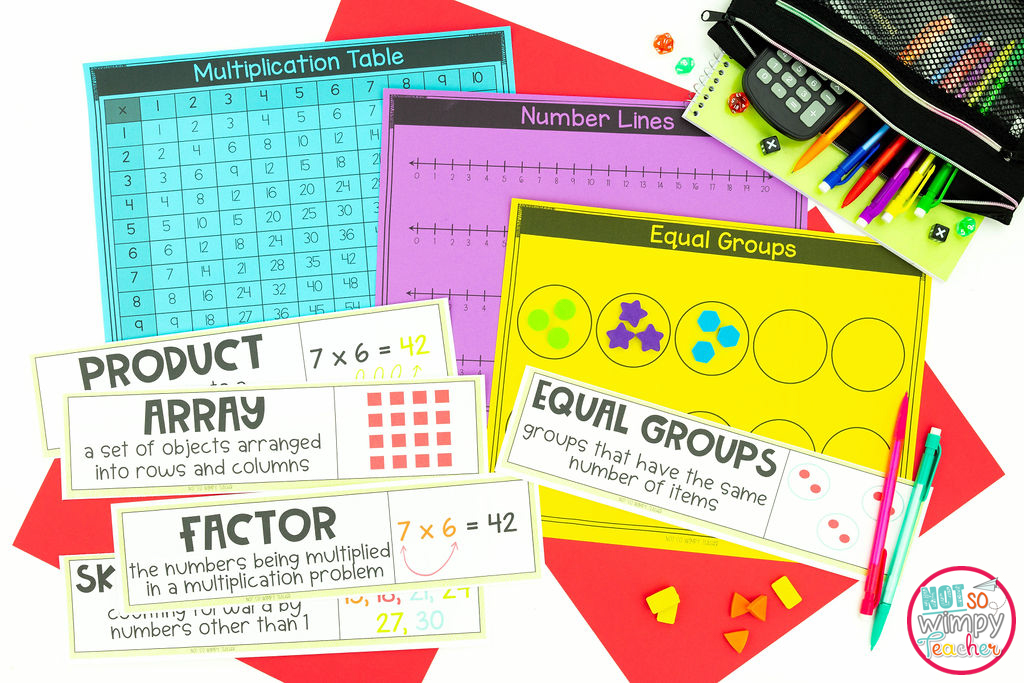
Third grade is a BIG year for math skills. Multiplication, division, fractions . . . those are just a few of the new concepts kids will be introduced to for the very the first time. Yeah, third grade math is a big deal.
That’s why we created a third grade math curriculum that’s as easy to use as it is effective. This curriculum is your one stop for interactive whole group lessons, differentiated small group activities, resources, tools, assessments, problem sets, practice pages, and engaging hands-on review activities. You’ll love how easy it is to use! And how much your students will learn.
Read more about the third grade math curriculum here. Or, do yourself a favor and grab this resource to make teaching math a piece of cake.
Shop This Post
Math Centers
I’ve also made it super easy to add math centers to your math instruction. My full year bundles includes 90 done for your centers that align perfectly with third grade standards. These activities all include simple, student-friendly directions and they remain the same all year long. So you spend less time providing instructions and more time practicing math.
Plus, kids love these hands-on activities. With tasks like sorts, matching, games, task cards, and more, math centers are both fun and effective.
Shop This Post
Interactive Notebooks
Interactive notebooks are one of my favorite tools to practice math skills. These notebooks combine student notes and practice problems into one fun activity. Students cut, fold, glue, and manipulate pieces in the notebook to complete the tasks. They are truly an interactive experience that promotes higher-level thinking and deeper understanding.
Interactive notebooks also make a great resource for students when they are working independently or at centers. They can even go back to their notes later in the year to refresh their memory on multiplication. Interactive notebooks are great for test prep and review. Learn more about how I use interactive notebooks in third grade.
Fact Fluency
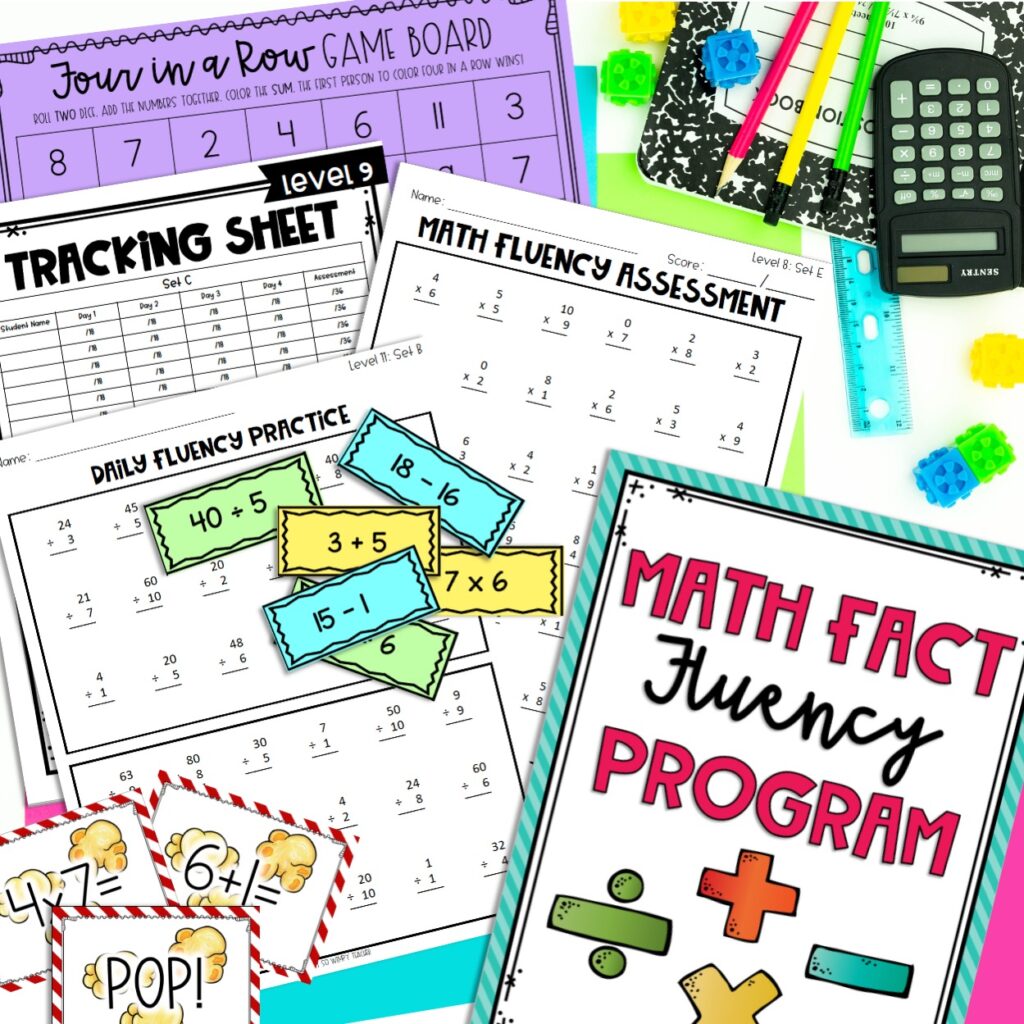
Fact fluency is an important component of students’ success in math. Basic fluency of the addition, subtraction, multiplication, and division facts lays the groundwork for more complex math skills.
If students are going to be confident mathematicians, they must know their math facts. This is especially important in third grade where students are learning multiplication and division for the very first time. And many are still struggling with addition and subtraction.
Sadly, many fact fluency programs don’t work. That’s why I believe in introducing mixed-facts right from the very beginning. Mixing up different facts requires students to actually learn the problems, not just memorize patterns on a page. It leads to better mastery overall. And it allows for true differentiation and eliminates the stigma of being stuck on the threes when everyone else has moved on to the eights and nines.
It is important to introduce a mixed-facts program early in the year to help kids master their basic facts. Read all about my fact fluency program here.
Shop This Post
Teaching Multiplication
As a third grade teacher, you will be spending lots of time teaching multiplication. PLEASE spend tons of time teaching strategies before you ask students to memorize facts! Familiarize yourself with different ways to model or represent multiplication facts. I find that it helps to give third graders several tools and then allow them to use the strategy that works best for them. This post shares 8 fun ways to teach multiplication.
I’ve even got a FREE resource for teaching multiplication.
These complete, done-for-you activities come straight from our third grade math curriculum. They are easy to implement, effective, and engaging. You and your students will love these activities!
This resource includes:
- A pre-assessment
- 5 days of whole group lesson plans
- 5 ready-to-use PowerPoint lessons for whole group instruction
- 5 days of small group lesson plans
- Meet the teacher activities, including extension and enrichment activities
- Interactive notebook activities
- 5 practice sheets, homework sheets, and exit tickets
- Vocabulary cards and helpful math tools
- A fun, hands-on student activity
- Answer keys
Favorite Third Grade Resources
Want to see even more of my favorite resources for third grade? I wrote a post all about them! Click HERE to see ALL of the amazing resources I’ve created for you to make teaching easier, more effective, and a whole lot more fun!

I sure hope you love teaching third grade as much as I did!
Have a Not So Wimpy Day,


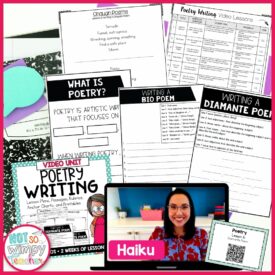
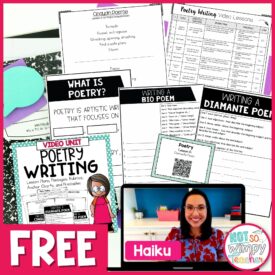

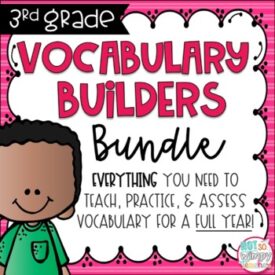
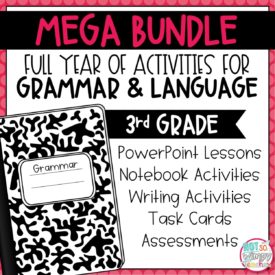
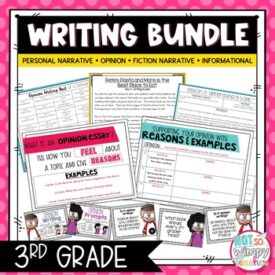
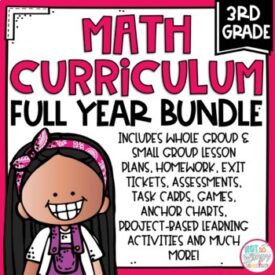
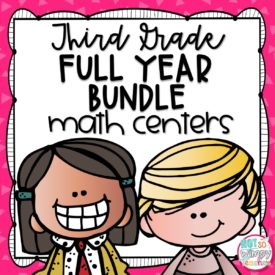
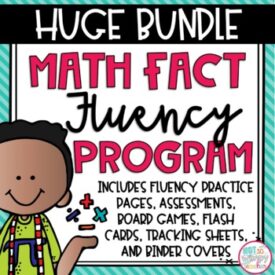

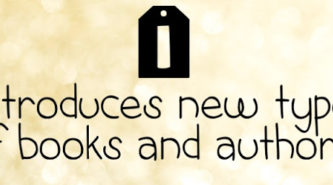
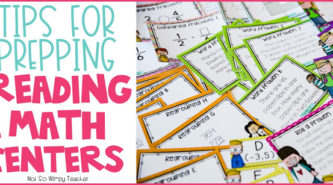
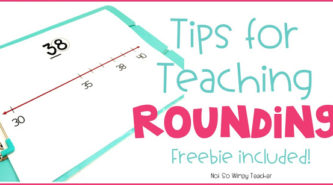











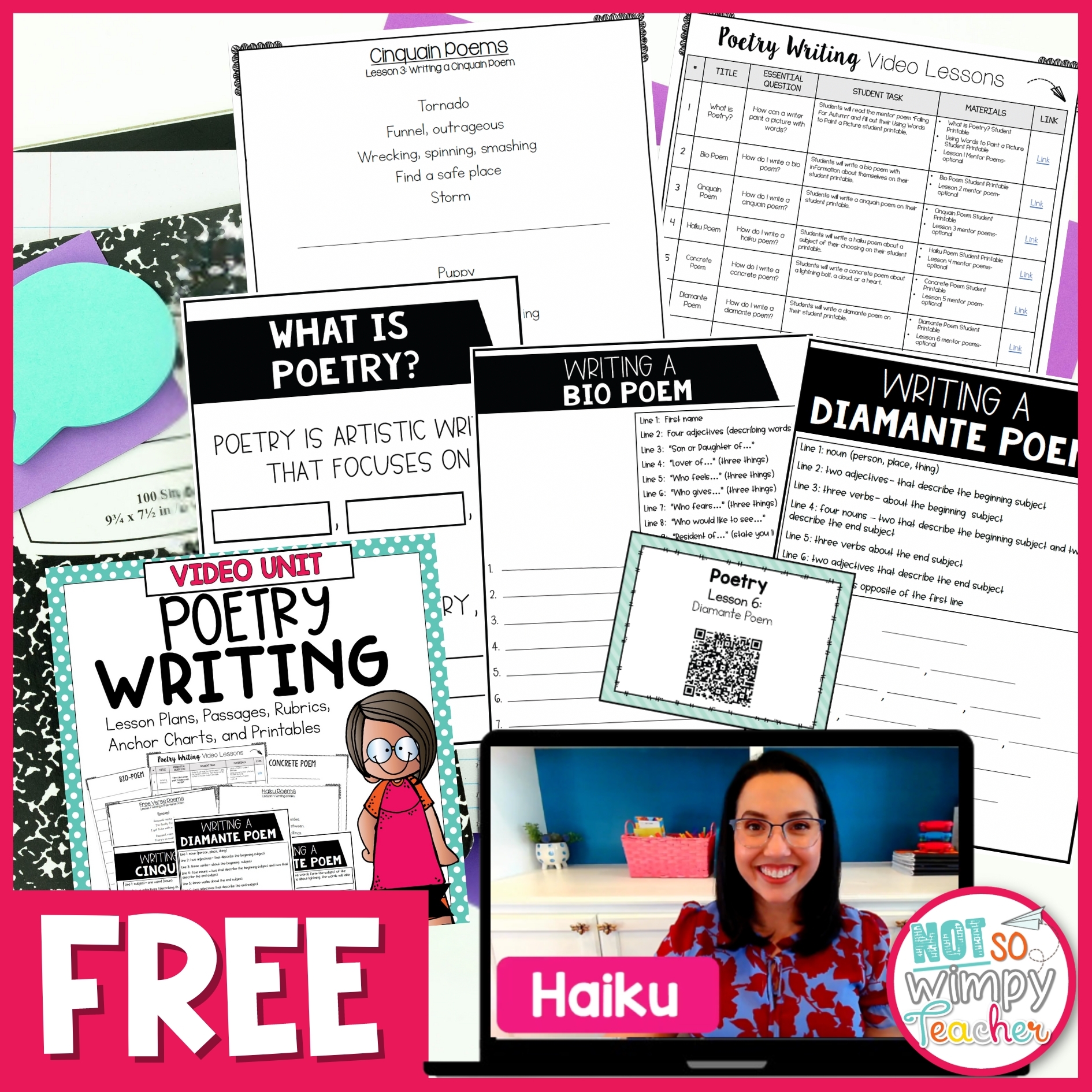 Free Poetry Writing Unit for grades 2-5!
Free Poetry Writing Unit for grades 2-5!
Great idea playing games and using classroom producers and rules as the cards!
So thrilled to find your site with all the wonderful advice and ideas for teaching!
Excited to try all your resources 😊
Heya.
This is what I did in order to ease a third grade class. My aim was ultimately to inspire them to learn new skills. I decided to try using a effective traffic light system to identify more areas of weaknesses and pupil strength too. It worked so well. Good luck. I used my pupil notes as well.
Red meant to signal a need to provide help at once. Yellow was indicative of a pupil slowly working hard at their own pace. And green denoted everything was fine. If any parents had issues they could talk to me at school or by email.